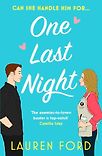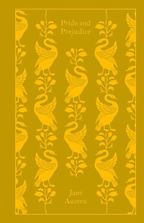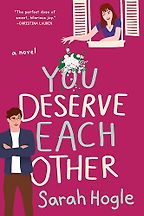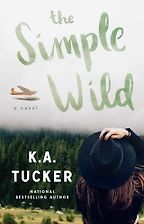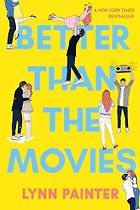The official definition of enemies-to-lovers is that the two main characters have to overcome misconceptions about each other or their differences to end up together. Probably the most well-known example of this is Pride and Prejudice. At the beginning of the book, Darcy is quite rude to Elizabeth but appears to change his mind quite quickly. Would you agree that every enemies-to-lovers book has this point, a pivot at which they start becoming lovers instead of enemies? And do you think it’s important when this point happens and that the reader knows that it is coming?
Pride and Prejudice really is the GOAT of enemies-to-lovers romance! Mr Darcy and Elizabeth Bennet come from different social classes and face societal expectations and family pressures that they must overcome but their banter reveals how similar they are and their personalities are well-suited to each other.
One thing I love about romance novels is when, as a reader, we see clues and glimpses that this couple are meant to be together, long before the characters figure it out for themselves. The reader needs to recognise that these two people are connecting on a deeper level and understand each other, aside from all the external obstacles keeping them apart. The characters must grow and change over the course of the story and that pivot can occur gradually through a slow burn or be a significant event that brings them together through forced proximity.
Something that makes Mr Darcy such a favourite male lead is that he’s loyal and shows that with gestures and actions rather than words. He does these acts of kindness expecting no credit. And most importantly, when he’s told of his shortcomings or wrongdoings, he listens, grows as a character and changes his behaviour. I think Elizabeth Bennet fell in love with his strength of character by watching his transformation and, in turn, recognised her part in their misconceptions as well.
Enemies-to-lovers trope works so well in romantasy because the characters are often on opposing sides with conflicting allegiances. The couple have external obstacles, sometimes life and death to overcome before they can be together. Above all of that, they are able to see each other’s true selves and fall in love.
In You Deserve Each Other by Sarah Hogle, the main characters fall back in love. It’s a clever twist on the more common trope of two leads falling in love with each other.
You Deserve Each Other is a fun twist on the trope because the characters are already engaged but want to call off the engagement. It’s a game of chicken to make the other call it off first. The novel weaves in another trope of second chances, which provides a beautiful ending and a fresh start for the romantic leads.
The pranks and antics they play on each other are hilarious. The characters already knowing each other helps with one of the funniest aspects of writing and reading enemies-to-lovers stories: banter! Banter in this trope allows for flirting distinguished as fighting, genuine feelings hidden behind jabs and facilitates great comedy.
Talking of which, how important is banter for sexual tension? In a book like Better than the Movies by Lynn Painter, does the banter make it a better book?
In Better Than the Movies, Wes and Liz are childhood friends-to-enemies-to-lovers, which was so fun to read because these characters have a rich history. They know each other’s families and childhood secrets. Better Than the Movies also has fake-friendship, which makes the lead characters work together, bringing them closer. Liz asks Wes to help her win over the affections of her long-term crush, who has just moved back into town. Liz and Wes have an electric banter, filled with flirting and laughter.
This book is a fun-filled version of enemies-to-lovers because Liz and Wes are never too unkind to each other. They battle and push each other, but you can always tell there is genuine affection between the characters. And the banter – it is so essential! Especially in the rom-com genre, because it is fun, light, and showcases the characters’ personalities.
Can the characters keep up with each other’s wit? Do they have the same sense of humour? It shows how these characters are so well-suited for each other, and you can imagine after the book is finished, they’re still teasing and making each other laugh. Banter also allows tension to build and sexual tension bubbles under the surface of the banter.
Another common trope is other characters in the books realising that they are in love before they are. For example, in The Simple Wild, your next recomendation. How does it help the plot?
The Simple Wild by K.A. Tucker is set in Alaska and is a beautiful romance novel that also explores themes of grief and forgiveness. It’s a city-girl vs country-boy, enemies-to-lovers story with pranks, misunderstandings and lots of banter.
Calla travels to Alaska to visit her estranged father, whose health is deteriorating. She meets Jonah, a local pilot who knows her own father better than she does. It’s a slow-burn romance with heart and humour. Side characters such as Jeb are acting as the reader. They’re seeing what the reader has witnessed in their sparring matches or maybe a lingering look.
The romantic leads may not have overcome their challenges or obstacles, so the side character is important in pushing them to see what’s happening in front of them and to maybe look again with fresh eyes. Is the person you can’t stop talking about really your enemy?
How do you tread the line of hate to love with an enemies-to-lovers book? For example in Fourth Wing, it’s a very close line between love and hate but it manages to avoid toxic hate. In the The Sea of Tranquility by Katja Millay, there is friendship and softness but harshness too.
The Sea of Tranquillity isn’t as well-known but I wanted to include it in the list because it’s a favourite of mine. Nastya doesn’t speak but no one knows why and Josh is dealing with immense grief. Both of the characters are isolated, dealing with deep trauma and start as enemies. This book doesn’t fit as firmly into the enemies-to-lovers trope as the other books, but the characters must overcome misconceptions and show vulnerability. It’s so well-written that I think it deserves a spot on the list.
There is a line that shouldn’t be crossed in terms of hate and cruelness before they are lovers. We want to like these characters, so they mustn’t be too harsh. They shouldn’t attack the other person’s personality because this is something they should secretly love. In enemies-to-lovers, there may be a reason they need to be harsh and distant, as with Fourth Wing but the reader will discover that was all an act later in the story, and therefore allows forgiveness for any unkind treatment. We don’t want the lead characters to be immature or hurtful with their arguments, as we still want to root for this couple to come together in the end.
Do you think it works better when one character realises they are in love and one doesn’t? In your own book, One Last Night, the male hero Harrison seems to realise much earlier than she does. Why did you write it this way?
One Last Night pairs enemies-to-lovers and fake-dating in a contained story. The characters are all trapped together in a restaurant during a once-in-a-lifetime storm. The contained proximity forces Harrison and Agnes to confront misconceptions and engage in conversations they may never have had. There was an inkling that they always had chemistry, but because of misunderstandings and a horrible ex, they never got the chance to explore it.
Harrison and Agnes have known each other for six years, so these characters already have history, secretly understand each other better than anyone else and just needed to be trapped in a storm to force it all to the surface. I think the male character falling first is a reader favourite. We love seeing the vulnerability of the MMC as he realises his feelings, but still has to maintain the enemy role. It’s here where Mr Darcy really shines, as does Harrison, by quietly taking care of the woman they’ve fallen in love with, but without pushing their feelings onto the person. They wait for them to realise their feelings when they’re ready.
Perhaps what is most enticing about enemies-to-lovers is that although they clash, they seem to see each other more clearly than anyone else. I think a lot of people find this very appealing – this idea that somebody sees and likes you for just the way you are. Do you think that is the most attractive part of enemies-to-lovers, or is it something else?
It is a really appealing aspect of the trope – the freedom to be honest with this person, knowing they still love them. For Agnes, she realises Harrison is the only person with whom she doesn’t need to hide her true feelings, people-please and he loves her anyway. Through being rivals and arguing, they’ve learnt how to fight in a healthy way that allows for them both to be seen and heard and their thoughts never to be trivialised. Enemies-to-lovers build a trust with each other over time and an honesty that romance lovers keep wanting to come back to time and again.
Five Books aims to keep its book recommendations and interviews up to date. If you are the interviewee and would like to update your choice of books (or even just what you say about them) please email us at [email protected]
Five Books interviews are expensive to produce. If you've enjoyed this interview, please support us by donating a small amount.

